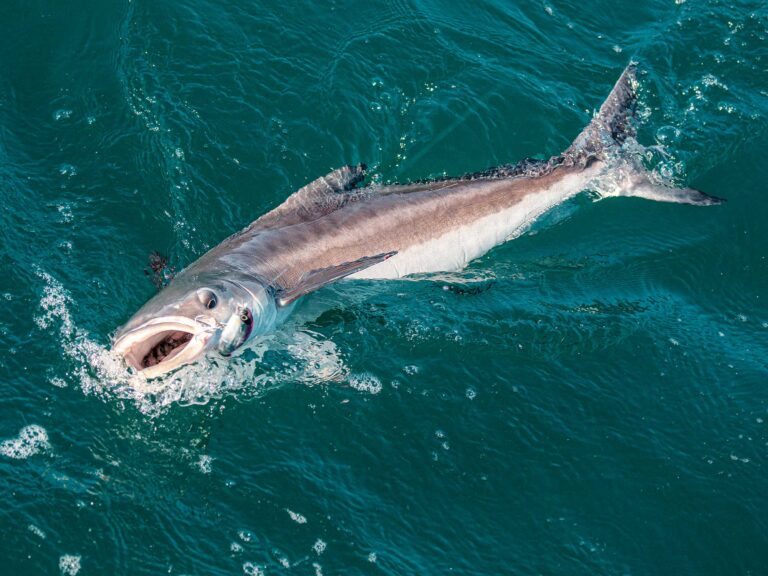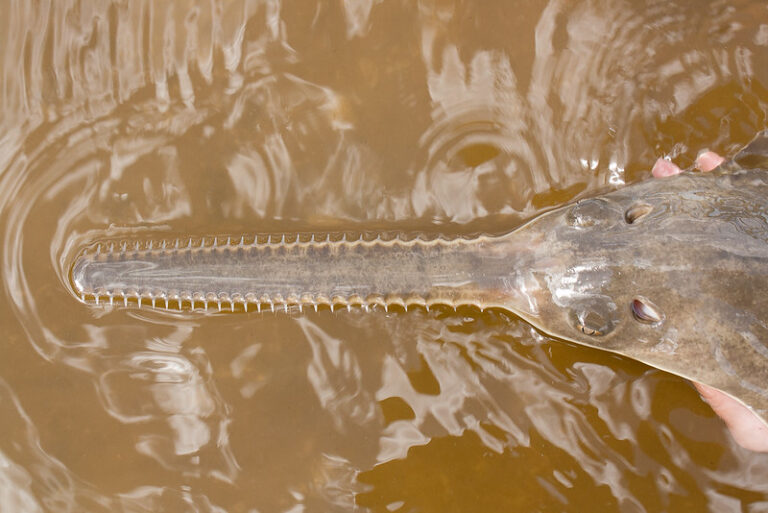
Squid are the most fascinating baits around. With a perfect shape that could only come from divine creation, squid are fast, elusive and cunning. They can move backward as easily as they can forward, and they can change direction in an instant. They can squirt an ink bomb for defense or change color to blend in with their surroundings. These animals are truly masters of camouflage, which gives fly designers an incredible number of options.
**CHARACTERISTICS
**Squid range in size from several inches to 2 feet, but their overall appearance is the same. They are fusiform and sleek with an enormous eye dominating their head and a body that’s longer than its legs. But what color are they? Any color and all colors. Anglers have come to prefer white, brown, tan, orange, pink or red, but there’s no consensus on which is best.
The squid’s stealthy profile allows efficient running. Its lines form a perfect natural taper except for its eye. And nothing characterizes a squid better in a fly than a large eye toward the rear. Even a Deceiver is just a baitfish imitation until you place an eye near the back of it. Then it becomes a squid pattern.
**Design Features
**Too often fly designers create beautiful squid flies only to ruin them by making the eyes too heavy or attaching them with glues that destroy the natural outline of the fly. For the Feather Fleye Squid, I use heavy monofilament as an extension of the hook shank and attach the eyes at the end of the line. This method is light, durable and simple. It keeps the eyes visible from both sides and allows me to place them right where I want them.
This pattern also uses feathers all along the length of the hook. I tie them in so that they mimic the natural taper of a squid’s body. To achieve this, I use smaller and smaller feathers as I move down the shank, and I tie them in so that they completely surround the hook. I bridge each application of feathers with a palmered webby saddle hackle and then proceed until the entire hook is covered. I can combine colors or stay with a single tone, but the process forms a textured body that has a unique and effective presence in the water.
Materials
HOOK: 2/0 Gamakatsu SP11 3L3H or equivalent long-shank hook
THREAD: Fine monofilament
HEAD AND TENTACLES: Long white bucktail
BODY: Light pink strung hackle
EYES: 80- or 100-pound mono and two 1/2-inch silver prismatic stick-on eyes
GLUE: Cyanoacrylate or head cement
Tying Instructions_**
Step 1: Prepare 80- to 100-pound mono by flattening about half inch of it, and press two stick-on eyes, back to back, onto the mono. Use a drop of glue to secure. Cut the mono so that it’s about half inch longer than the hook and flatten the last half inch. Beginning about halfway down the shank, wrap a layer of thread back to the bend and then tie the last half inch of the mono to the hook.

Step 2: Attach a sparse amount of white bucktail at the hook’s bend, encircling the shank completely with hair. The bucktail should reach well past the eyes. To achieve a taper, attach a second bundle of bucktail that’s slightly shorter than the first one. This bunch should be long enough to just cover the eyes.
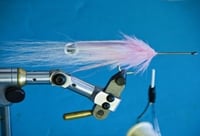
Step 3: Prepare a handful of light pink feathers that are just long enough to reach the eyes from their tie-in point. Do not remove the fluff from the stems because it helps form the taper. Tie in one feather at a time, 360 degrees around the shank, with the curved side facing in. Next, palmer only the webby portion of a very webby hackle about three to four turns and then tie it off. This will form a bridge between the groups of feathers.
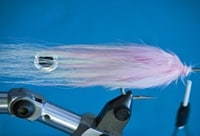
Step 4: Repeat the process above, using shorter and shorter feathers for each step (it will probably take three applications).

Step 5: After the shank has been filled with the final application of feathers, simply tie off and whip-finish. There is no need to palmer a hackle at this point.
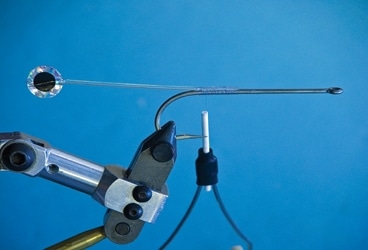
Tying the Feather Fleye Squid

Tying the Feather Fleye Squid

Tying the Feather Fleye Squid

Tying the Feather Fleye Squid







